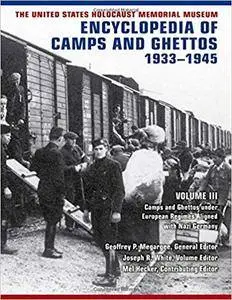Geoffrey Megargee, Joseph White, "The United States Holocaust Memorial Museum Encyclopedia of Camps and Ghettos, 1933–1945, vol. III: Camps and Ghettos under European Regimes Aligned with Nazi Germany"
2017 | ISBN-10: 0253023734 | 1100 pages | PDF | 82 MB
2017 | ISBN-10: 0253023734 | 1100 pages | PDF | 82 MB
This monumental seven-volume encyclopedia, prepared by the Jack, Joseph and Morton Mandel Center for Advanced Holocaust Studies at the United States Holocaust Memorial Museum, examines the universe of camps and ghettos)―more than 40,000 in all―that the Nazis and their allies operated, from Norway to North Africa and from France to Russia.
Volume III describes sites under the control of states that aligned themselves with Nazi Germany, as allies, satellite countries, or independent collaborationist regimes. For a variety of reasons, France, Italy, Hungary, Romania, Bulgaria, Croatia, and other such states each undertook the persecution, and often the murder, of people it considered undesirable or threatening. Such target groups included Jews, who were often killed directly or handed over to the Germans. Other victims spanned any number of ethnic or national groups, or political or military opponents. Each state created its own unique mix of detention sites under a variety of agencies, but all with goals that mirrored those of Nazi Germany. From the far north of Finland to France’s west African colonies, this network of sites did its work with little or no input from the Germans. This volume, with its descriptions of the individual sites and broad introductions to the regimes that governed them, adds to our understanding of a system that was truly European in scale, and not solely a German undertaking.



